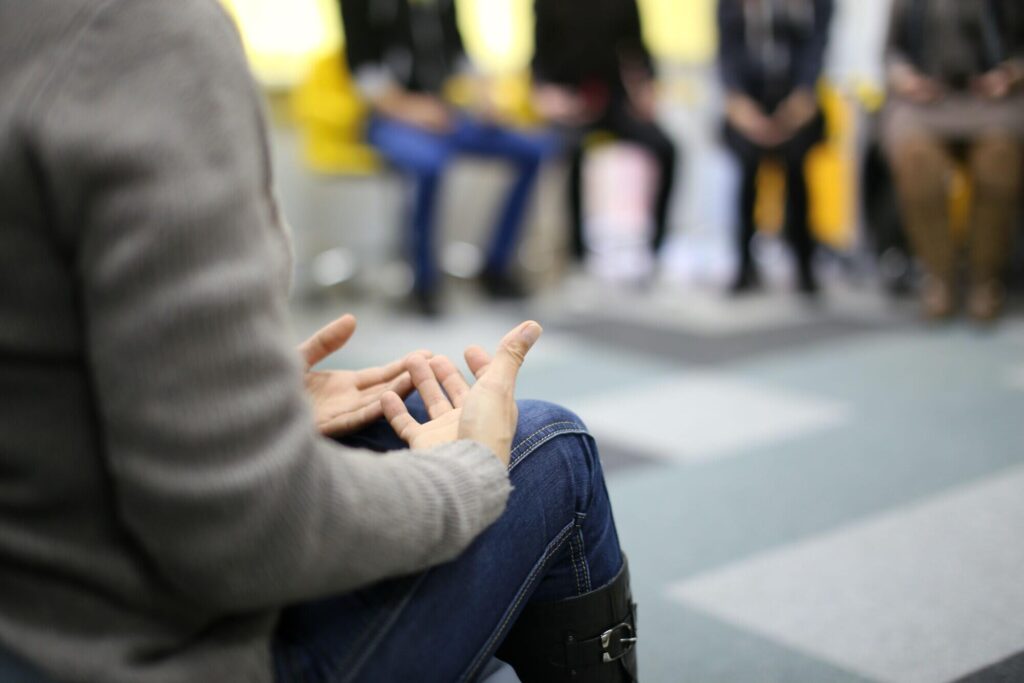A drug rehab program helps people recover from substance abuse. It offers structured support to manage addiction safely. Programs focus on physical, emotional, and mental health recovery.
Patients learn coping skills to prevent relapse. Care is provided in a controlled environment for safety. Family and peer support are often included.
Explore this guide to understand what to expect in a drug rehab program and how it can support long-term recovery.
Initial Assessment
When entering a drug rehab program, the first step is an assessment. This involves evaluating physical health and addiction history.
Staff also check mental health and emotional well-being. They identify any co-occurring conditions. The assessment helps create a personalized treatment plan.
Patients may have medical tests or interviews. Honest answers ensure the best care.
The process sets the foundation for recovery. It helps both staff and patients understand the level of support needed.
Detoxification Process
Detox is often the first stage of a drug rehab program. The body clears substances under medical supervision. Symptoms of withdrawal are monitored and managed.
Detox ensures patients are physically ready for therapy. It can take a few days to a week, depending on the substance.
Supportive care reduces discomfort and risks. Patients are encouraged to stay hydrated and rest.
Detox also prepares them emotionally for the next steps. Successful detox increases chances of long-term recovery.
Individual Therapy
Individual therapy is a core part of a drug rehab program. Patients meet with counselors one-on-one.
Therapy focuses on understanding triggers and behaviors. Patients learn coping strategies to manage cravings.
Sessions are tailored to each person’s needs. Confidentiality helps patients speak openly. Therapists guide patients to set realistic recovery goals.
Skills learned in therapy are applied outside sessions. Regular therapy supports consistent progress and self-awareness.
Group Therapy
Group therapy is included to build peer support. Patients meet others facing similar challenges. Sessions encourage sharing experiences and advice.
Group discussions improve social skills and empathy. Patients learn from others’ successes and setbacks.
Structured exercises promote teamwork and understanding. Supportive feedback helps patients stay motivated.
Feeling understood reduces isolation and shame. Group therapy creates a sense of community in the rehab program.
Family Counseling
Family counseling strengthens the recovery process. Loved ones learn about addiction and recovery.
Sessions improve communication within the family. Families are taught how to provide support without enabling.
Conflicts and misunderstandings are addressed safely. Patients gain confidence knowing their family is involved. It helps rebuild trust that may have been lost.
Counseling promotes healthier relationships during recovery. Families play an active role in long-term success.
Educational Sessions
Educational sessions teach about addiction and recovery. Patients learn how substances affect the body and mind.
Information helps them understand why cravings happen. Sessions cover relapse prevention strategies.
Patients learn to recognize early warning signs. Knowledge empowers patients to make informed choices. Education helps them build skills for daily life after rehab.
Sessions are simple and practical. Understanding addiction supports long-term behavior change.
Life Skills Training
Life skills training is part of a drug rehab program. Patients learn essential daily living skills.
Training covers budgeting, time management, and stress coping. It also includes communication and problem-solving techniques.
Skills help patients reintegrate into society. Building independence increases confidence and self-esteem. Training is hands-on and practical.
Staff provide guidance and feedback during exercises. Life skills reduce the risk of relapse by promoting structure and stability.
Medication Management
Medication may be used to support recovery. Staff monitor patients taking prescribed drugs. Medications can help reduce cravings or manage withdrawal symptoms.
Patients are educated on proper use and potential side effects. The goal is safe and effective treatment.
Regular check-ins ensure medications are working as intended. Adjustments are made as needed.
Medication is combined with therapy for the best results. Proper management supports physical and mental recovery.
Recreational Therapy
Recreational therapy is included to promote healthy habits. Patients participate in activities like art, sports, or music.
Activities reduce stress and improve mental health. They teach teamwork and patience. Recreation provides positive alternatives to substance use.
Patients explore hobbies and personal interests. Structured activities create routine and engagement.
Participation boosts self-esteem and motivation. Recreational therapy helps maintain balance in recovery.
Aftercare Planning
Aftercare planning prepares patients for life after the program. Plans include ongoing therapy or support groups.
Patients learn strategies to handle triggers outside rehab. Follow-up helps prevent relapse.
Staff create a step-by-step transition plan. Patients may receive resources for housing or employment. Communication with family is reinforced.
Aftercare ensures continued support during the first months of recovery. Planning is essential for long-term success.
Support for Special Cases
Some patients may need additional support. Couples or families may attend sessions together.
Individual situations are considered in treatment plans. Drug intervention may be part of the initial approach.
Staff adjust therapy for unique emotional or medical needs. Special support ensures no one is left behind. Programs remain flexible to meet changing needs.
Patients feel safe and understood. Tailored care improves recovery outcomes for everyone involved.
Monitoring Progress
Monitoring progress is continuous throughout the rehab program. Staff track behavior, therapy participation, and health. Regular assessments check improvements and challenges.
Feedback helps adjust treatment plans if needed. Patients are encouraged to reflect on their journey. Progress tracking maintains accountability.
Achievements, even small ones, are celebrated. Monitoring ensures treatment stays effective. Continuous evaluation strengthens chances of sustained recovery.
Coping with Cravings
Cravings are normal in a drug rehab program. Patients learn to recognize triggers early. Staff teach simple techniques to handle urges.
Deep breathing or short walks can help. Talking to a counselor reduces stress.
Distraction with hobbies or exercises is encouraged. Patients are reminded that cravings pass with time.
Peer support also helps manage urges. Learning to cope strengthens recovery and confidence.
Know What to Expect in a Drug Rehab Program
A drug rehab program provides structured support for recovery. It combines medical care, therapy, and life skills training.
Family and peer involvement enhance success. Each stage prepares patients for long-term sobriety.
Education and recreational activities promote balance and mental health. Aftercare planning ensures continued support beyond the program. Understanding what to expect helps patients and families commit to lasting recovery.
For other topics, check our blog!






